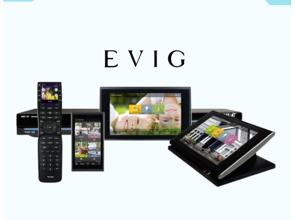TV Advertising: Why It Still Plays a Critical Role

In an era dominated by digital platforms and streaming services, television advertising remains a cornerstone of marketing strategies. Despite the rise of online channels, TV continues to offer unparalleled reach, emotional impact, and brand-building potential. For marketers, understanding why TV advertising retains its critical role is essential for crafting campaigns that resonate with audiences and deliver measurable results. This article explores the enduring strengths of TV advertising, its evolving role in a multi-channel world, and how brands can leverage its unique advantages to stay competitive.
The Power of Mass Reach
Television’s ability to reach vast audiences remains one of its greatest strengths. Unlike fragmented digital platforms, TV can deliver a message to millions of viewers simultaneously, particularly during high-profile events like sports championships or award shows. This mass reach is invaluable for brands seeking to build awareness or launch new products, as it creates a shared cultural moment that resonates across demographics.
Even in an age of cord-cutting, TV viewership remains robust. Linear TV, including cable and broadcast networks, continues to attract sizable audiences, particularly for live events and news programming. Meanwhile, connected TV (CTV) platforms, which stream content via internet-connected devices, have expanded television’s reach further, blending traditional TV’s scale with digital precision. This dual ecosystem ensures TV remains a go-to channel for brands aiming to connect with diverse audiences.
Emotional Storytelling on a Grand Scale
Television’s large-screen format and immersive viewing experience make it an ideal medium for storytelling. Unlike smaller digital formats, TV ads can leverage high-quality visuals, sound, and narrative arcs to evoke emotion and forge lasting connections with viewers. A well-crafted TV commercial can inspire, entertain, or move audiences, creating a memorable impression that lingers long after the ad ends.
This emotional impact is particularly effective for brand-building campaigns. By aligning ads with popular shows or events, marketers can tap into the mood and context of the content, amplifying their message. For example, a heartfelt ad aired during a family-oriented drama can resonate deeply, while a high-energy commercial during a sports event can capture excitement and enthusiasm. This ability to align creative with audience sentiment sets TV apart from other channels.
See also: Mastering Real-World Self-Defense with SGS Krav Maga
Building Trust and Credibility
Television advertising carries a level of credibility that digital platforms often struggle to match. The polished production values and established reputation of TV networks lend an air of authority to brands that advertise on them. For consumers, seeing a brand on TV signals legitimacy and scale, fostering trust in a way that pop-up ads or social media promotions may not.
This trust is particularly valuable for industries like finance, healthcare, or automotive, where credibility is paramount. A TV campaign can position a brand as a market leader, reinforcing its reliability and quality. Even as digital platforms grow, TV’s ability to convey trustworthiness remains a key reason marketers continue to invest in it.
Complementing Digital Strategies
Far from being replaced by digital channels, TV advertising has evolved to complement them. Integrated campaigns that combine TV with digital touchpoints—such as social media, mobile apps, or CTV platforms—create a cohesive brand experience across multiple screens. For instance, a TV ad can drive viewers to a website or social media campaign, where they can engage further with interactive content or promotions.
This synergy is particularly powerful in today’s multi-device world. Consumers often watch TV while using smartphones or tablets, creating opportunities for second-screen advertising. Marketers can use TV to spark interest and digital channels to deepen engagement, guiding consumers through the purchase funnel with a seamless narrative.
Adapting to New Viewing Habits
The rise of streaming and CTV has transformed how audiences consume TV, but it hasn’t diminished the medium’s importance. Instead, it has expanded the opportunities for advertisers. CTV platforms allow for precise targeting, enabling marketers to deliver ads to specific households based on viewing habits, demographics, or interests. This data-driven approach mirrors digital advertising’s strengths while retaining TV’s immersive format.
Additionally, ad-supported streaming models, such as free ad-supported streaming TV (FAST) and hybrid subscription platforms, have created new inventory for advertisers. These platforms appeal to cost-conscious viewers, offering marketers access to engaged audiences at a lower cost than traditional TV. By blending the scale of TV with the precision of digital, CTV ensures television advertising remains relevant in a streaming-dominated world.
Navigating Challenges in TV Advertising
While TV advertising offers significant advantages, it also comes with challenges. Production costs for high-quality TV commercials can be substantial, requiring brands to invest in creative that justifies the expense. Additionally, measuring return on investment (ROI) can be complex, as TV’s impact often extends beyond immediate conversions to long-term brand equity.
Fragmentation is another hurdle. With audiences split across linear TV, CTV, and digital platforms, marketers must carefully plan campaigns to maximize reach without diluting impact. This requires a deep understanding of audience behavior and platform strengths, as well as the ability to adapt creative for different formats and contexts.
Leveraging Advanced Technologies
Technology is enhancing TV advertising’s effectiveness, making it more dynamic and measurable. Programmatic advertising, for instance, allows marketers to purchase TV ad inventory in real time, optimizing for audience and context. This automation streamlines the buying process and ensures ads reach the right viewers at the right time.
Addressable advertising is another game-changer, enabling brands to deliver different ads to different households watching the same program. This level of personalization, once exclusive to digital platforms, is now a reality in TV, allowing marketers to tailor messages with unprecedented precision. Meanwhile, advancements in measurement tools are improving attribution, helping brands track how TV ads drive actions across devices and channels.
The Role of Creative Innovation
Creativity remains at the heart of successful TV advertising. As viewer expectations evolve, brands must push boundaries to capture attention. Short-form ads, designed to fit streaming platforms’ fast-paced nature, are gaining prominence, while interactive formats—such as QR codes or shoppable ads—bridge the gap between viewing and purchasing.
Branded content is also reshaping TV advertising. By producing original programming or sponsoring shows, brands can integrate their messages seamlessly into the viewing experience. This approach feels less intrusive and more engaging, aligning with modern audiences’ preference for authentic, value-driven content.
Why TV Advertising Endures
Television advertising’s enduring relevance lies in its ability to adapt while retaining its core strengths. Its unmatched reach, emotional resonance, and credibility make it a vital tool for marketers, even as digital channels proliferate. By integrating with digital strategies, leveraging new technologies, and embracing creative innovation, TV advertising continues to evolve, meeting the demands of a fragmented media landscape.
For brands, the key to success lies in understanding TV’s unique role in the marketing mix. It’s not about choosing between TV and digital but about using them in tandem to create a holistic, impactful campaign. As audiences continue to embrace both traditional and streaming TV, advertisers who master this balance will find television remains a critical driver of brand awareness, engagement, and loyalty.







